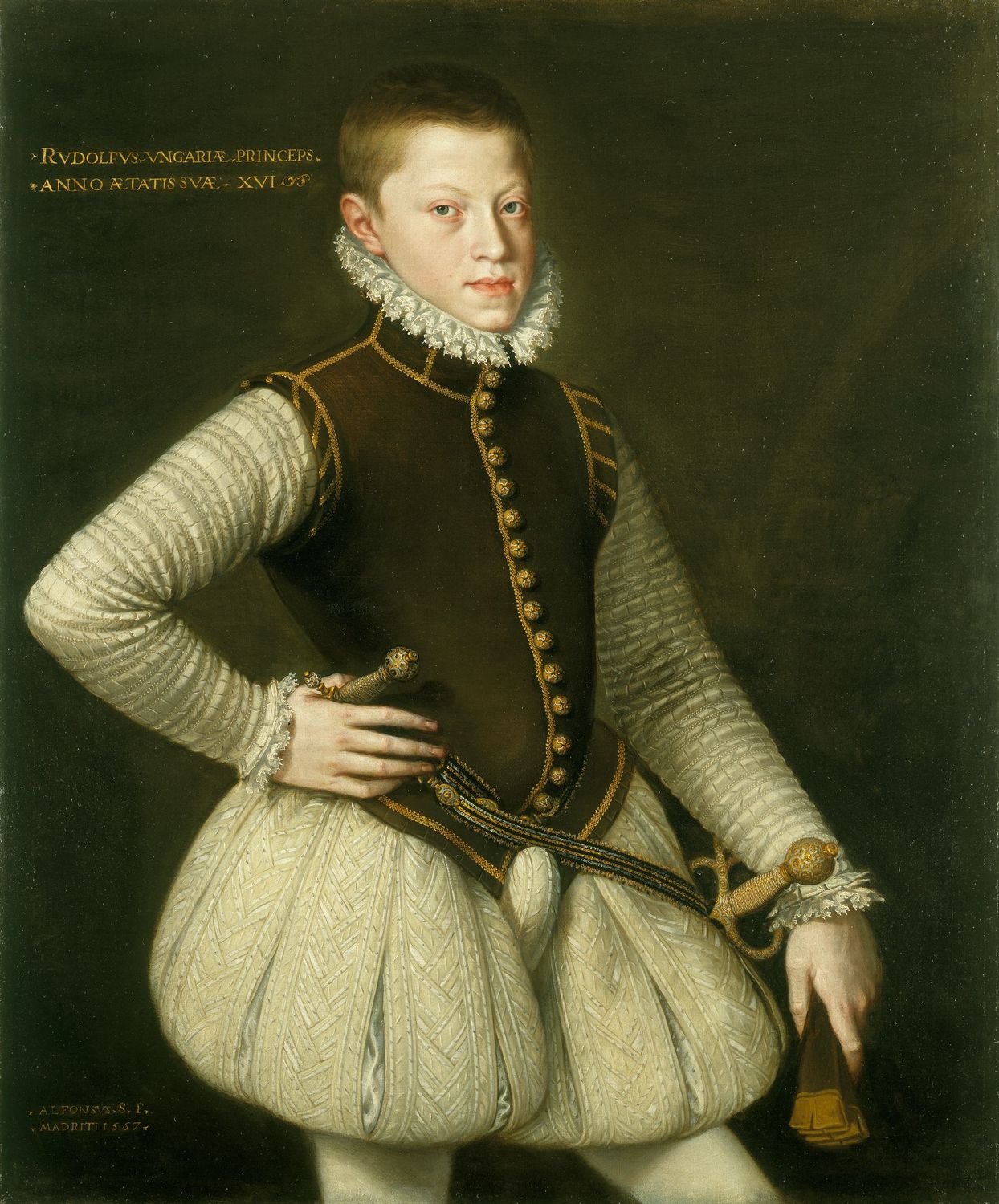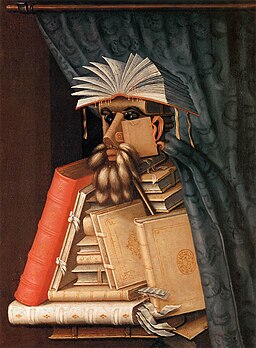A few weeks back I sent out a tweet asking for post suggestions. The best was a request for “the larger context of sixteenth century Prague.” I loved the idea but found it beyond my expertise. Fortunately, I found an extremely qualified guest blogger to address this snarly topic.
Lucy Kemnitzer has been working on a vast interconnected tangle of low-fantasy historical-flavored stories and novels set in a secondary world informed by Central/Eastern Europe but not analogous to it. A few of her early stories can be found at Fictionpress. She became entangled with this region while visiting her first-born who lived in Prague for seven years while studying at Charles University. This came after realizing her family’s heritage was four ways not-quite-Polish and four ways not-quite-German (including the Jewish and Sinto parts).
You can find her two published science fiction novels at Less Than Three Press and a sprinkling of short stories, mostly fantasy.
Lucy’s personal blog on Livejournal
Lucy’s author blog is a bit behind the times for actual reasons but is expected to liven up this year.
_________
I set out to write about the deep history of ethnicity in the city of Prague, and I will, but let me frame it by talking a bit about some of the public spaces tourists often miss, because these are beautiful places where you can witness both the myth and the history. Also I promised Alison this would relate to Rudolfine Prague, and it will, but not till the end.
In Prague you take the city bus to the forest, you hike past farms and abandoned military installations to get to the mountains–and then you buy beer and sausages to listen to the national opera(1) while perching on a steep hillside peering around the narrow trunks of tenth-growth trees. Along the way are feral fruit trees descended, they say, from the ones planted on decree of a long-ago empress, so that soldiers would have nourishment as they traveled. Like most of the stories I’m going to tell here, this is not quite how it really went(2). This city park is called Divoká Šárka. Šárka was the lieutenant of Vlasta, women who according to legend waged war against the men after the death of Queen Libuše, who with her ploughman husband Přemysl founded Prague where they found a man making a threshold (“prah,” in Czech).
If you count back from historically documented Přemyslid rulers, this legend is clearly impossible. There was no such thing as a Czech at the time any of this could have happened: the undifferentiated Western Slavs didn’t arrive in the region until the seventh century. The first slavic ruler in Bohemia was in the ninth century. By that time there were already several different kinds of people living there.
In order to tell you who was living in the Czech lands before the Czechs, I’m first going to tell you about a modern park in Prague 13. It’s called Centrální park (yes, it is named after New York’s Central Park), and it’s endowed with all the things an extremely large park needs, including lawns, giant chaise longues for sunbathing, bicycle paths, children’s playgrounds, fishing ponds, a beer garden, an archaeological site, and a Celtic tree calendar with a big rock in it(3). This is homage to the Celts who are the first documented inhabitants of Prague. The earliest archaeological finds you can see displayed in replica with some reconstructions and interpretation at the Prague City Museum(4).
These were not just any Celts! In Julius Caesar’s Gallic Wars, we learn that the Boii (who gave their name to Bohemia), picked up and left to throw in their stakes with the Helvetii who had a grand plan to relocate to Western Gaul and establish a hegemonic regime to rival the Romans. They lost, but while the Helvetii were sent back to their homeland which they unfortunately scorched, the Boii were absorbed into other Celtic tribes in Western Gaul and northern Italy, leaving behind no other record of themselves than a small handful of coins stamped with their name(5).
You’ll notice this leaves Bohemia rather depleted of people. Not for long! It fills up with several tribes of Swabians (Germans) who live quite nicely there. Naturally, Celts and Italians were coming and going through all this time as well. The central location of the Bohemian plateau and its navigable rivers meant that people were coming in from all over during the Roman and post-Roman times.
The Slavs arrived as a band of marauders in the sixth and seventh centuries, just ahead of the Magyars, behind many other waves of marauding tribes who came into Europe and settled in there. It’s kind of hard to characterize the early Slavs because there isn’t a cohesive and distinct archaeological record for them: the reconstructed language history doesn’t seem to match up with what we do know about the cultural history: and early records are scarce and confusing and often refer to places no longer known(6). None of this stopped Alfons Mucha, who you probably know from his Art Nouveau posters of voluptuous underclad women with nasturtiums and calla lilies and also Sarah Bernhardt in drag as Hamlet, from painting his immense Slav Epic (Slovanská epopej), in which he tells a story in 20 immense canvases which is by turns glorious and bitter and almost completely false(7).
The Slavs arrived to find the Germans already brewing the beer and wine for which Bohemia and Moravia respectively became famous. Agricultural methods that (barely) sustained the inhabitants of the plains through which the Vltava River flows were already in place. By the time Bohemia became a player in the Holy Roman Empire the place was still more German than Czech.
The Jews arrived in Prague in the ninth century, took up residence near Prague Castle and Vyšehrad (also a castle). We have a lot of records about Jewish history in Prague(8). Jews have been, in Prague as elsewhere, far more important than mere numbers would indicate, for their contribution to culture, technology, and politics.
The beloved Charles IV (the Holy Roman Emperor whose 700th birthday is being celebrated this year), though descended from the Czech Přemyslids on his mother’s side, was Luxembourgian on his father’s side and given a French education and Italian war experience before becoming King of Bohemia and a lot of other places.By the time he was building CHarles University and the Hunger Wall and generally advancing his subjects, he felt it important to learn Czech along with the usual Latin, French, German, and Italian. As in the rest of the Holy Roman Empire, in Prague there was a cosmopolitan community filled with polyglots.
So a couple of centuries later when Rudolf II comes along, he’s ruling–among other things, remember he’s a Holy Roman Emperor(9) a Prague with a fully diverse population. This fully diverse population is actively restructuring itself (as it is in the rest of Europe), in at least three different dimensions: class, religion, and nationality. Rudolf’s Prague was a turmoil of landed aristocracy versus bourgeoisie versus the guilds, Protestant versus Catholic, Czech versus German versus Italian (still lots of Italians in those days, and Rudolf imported some new ones for their craftsmanship) and all versus Jews. Rudolf found some of this to be useful. He wasn’t a Protestant himself, but he didn’t consistently persecute them because they could be a wielded in struggles with the Pope. Likewise with class and nationality: Rudolf found allies and enemies in every corner, and he was happy to trade one for another if it would advance his projects.
There is one book I recommend to everyone who would like to understand these aspects of Prague’s history better: Prague in Black and Gold, by Peter Demetz (You can currently get a copy from Powell’s). Peter Demetz’s perspective on the rich tapestry of life and the complicated forces of history is refreshing and enlightening.
_________
(1)On the first Saturday of September. (here’s a description of the most recent one)
(2)According to Structure and management of the urban forest in Prague Maria Theresa decreed that trees in general should be planted along all the roads to aid in orientation in bad weather, provide firewood, and improve the landscape. The fact remains that roads in Prague and elsewhere in the region do tend to have a lot of feral fruit trees on them.
(3)Here’s a picture of it taken by some Ingress player. I know, that’s odd, but the only descriptive links I can find are in Czech.
(4)Off-topic: this year would be a good time to hit up all the many historical museums in Prague because it’s the 700th anniversary of the birth of Charles IV, who was as good a king as a king can be, and I am not being sarcastic here.
(5)There has to be a better translation of this book than I can find online. Cicero thought Caesar was an excellent literary stylist. I remember it read quite nicely in second-year Latin. But this translation is all kludge and sludge and it’s all I can find right now.
(6)Seriously, read this Wikipedia article for a look at how baffling early Slavic history is.
(7)Here’s a kind of blurry panorama [YouTube] a visitor made of the exhibit at the National Gallery, which is worth visiting not just for the amazing and beautiful monster of propaganda which is the Slav Epic, but also for the other exhibitions, which cover a lot of territory, artistically and historically, in a pleasant building which was once a department store. It’s across the river from Staré Město (Old Town), and while you are over there you can check out the Agricultural Museum, the Technical Museum, and the Modern Art Museum, if you have strong enough feet. Also there is another huge park, the Letenské sady (Letna Park) nearby, which has great views of the Vltava River and Staré Město, and in spring is redolent of lilacs that grow on big! Old! Trees!
(8)For more Jewish history in Prague you could start at the The YIVO Encyclopedia of Jews in Eastern Europe or the Jewish Virtual Library. Also, the Golem is a Prague story, so if you look up Golem stories you’ll get some Prague local color. Be aware that all of the surviving synagogues in the Jewish Quarter of Prague are also museums (as well as being working synagogues, so time your visits appropriately).
(9)Another cool thing about Charles IV is that he set up a method for succession that didn’t depend on the personalities of his children. Consequently the Holy Roman Empire that Rudolf inherited was almost the same size and shape as the one Charles IV left behind.






